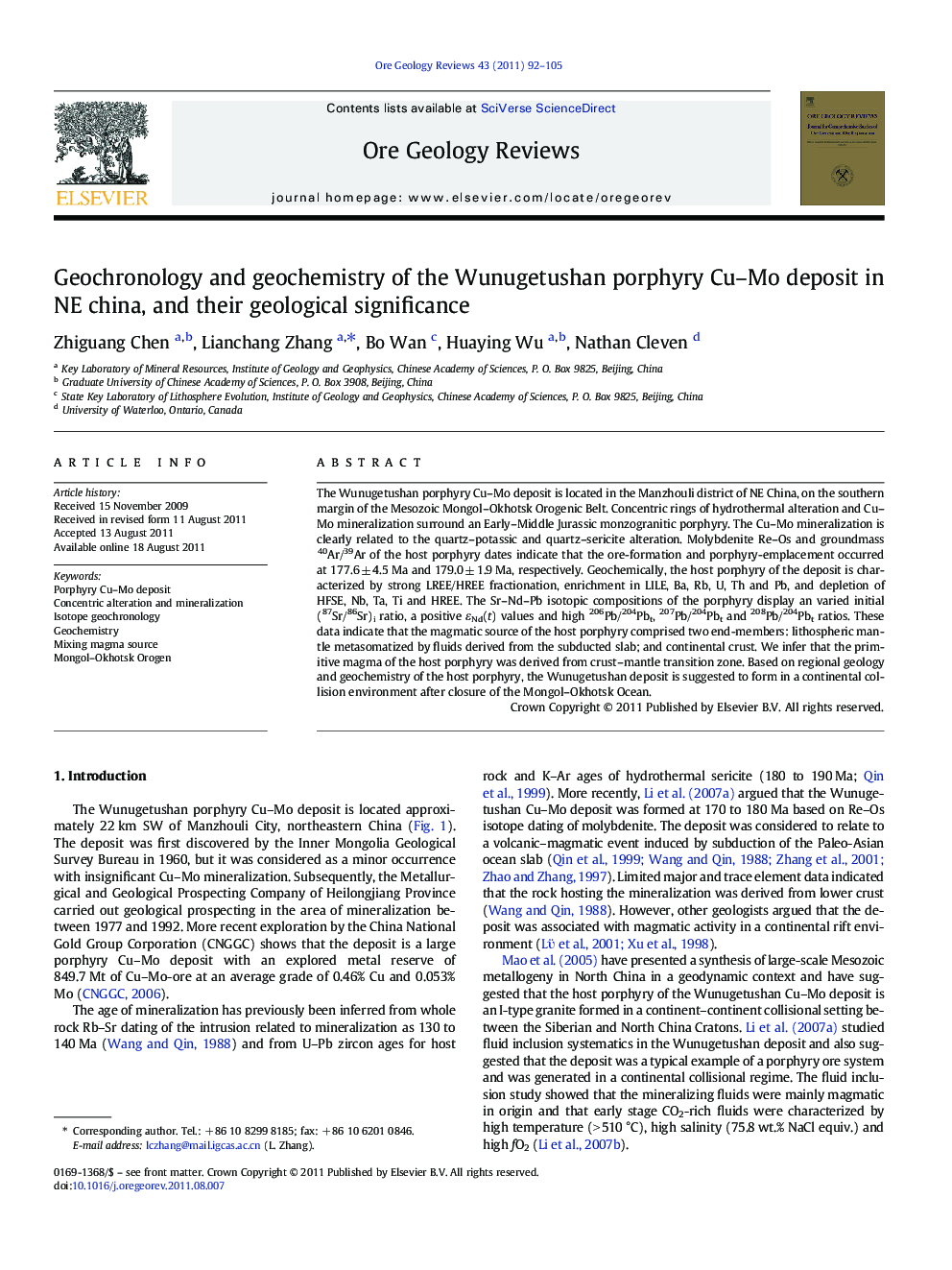| کد مقاله | کد نشریه | سال انتشار | مقاله انگلیسی | نسخه تمام متن |
|---|---|---|---|---|
| 4697636 | 1351890 | 2011 | 14 صفحه PDF | دانلود رایگان |

The Wunugetushan porphyry Cu–Mo deposit is located in the Manzhouli district of NE China, on the southern margin of the Mesozoic Mongol–Okhotsk Orogenic Belt. Concentric rings of hydrothermal alteration and Cu–Mo mineralization surround an Early–Middle Jurassic monzogranitic porphyry. The Cu–Mo mineralization is clearly related to the quartz–potassic and quartz–sericite alteration. Molybdenite Re–Os and groundmass 40Ar/39Ar of the host porphyry dates indicate that the ore-formation and porphyry-emplacement occurred at 177.6 ± 4.5 Ma and 179.0 ± 1.9 Ma, respectively. Geochemically, the host porphyry of the deposit is characterized by strong LREE/HREE fractionation, enrichment in LILE, Ba, Rb, U, Th and Pb, and depletion of HFSE, Nb, Ta, Ti and HREE. The Sr–Nd–Pb isotopic compositions of the porphyry display an varied initial (87Sr/86Sr)i ratio, a positive εNd(t) values and high 206Pb/204Pbt, 207Pb/204Pbt and 208Pb/204Pbt ratios. These data indicate that the magmatic source of the host porphyry comprised two end-members: lithospheric mantle metasomatized by fluids derived from the subducted slab; and continental crust. We infer that the primitive magma of the host porphyry was derived from crust–mantle transition zone. Based on regional geology and geochemistry of the host porphyry, the Wunugetushan deposit is suggested to form in a continental collision environment after closure of the Mongol–Okhotsk Ocean.
► Molybdenite Re–Os and 40Ar/39Ar dating are used to constrain ore-forming ages.
► Geochemical analyses show that the primitive magma of the host porphyry was derived from crust–mantle transition zone.
► The Wunugetushan deposit is suggested to form in a continental collision environment after closure of the Mongol–Okhotsk Ocean.
Journal: Ore Geology Reviews - Volume 43, Issue 1, December 2011, Pages 92–105